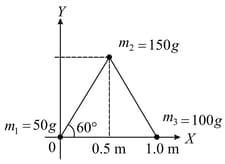Mass is non-uniformly distributed over the rod of length . Its linear mass density varies linearly with length as . The position of centre of mass (from lighter end) is given by-
Important Questions on Centre of Mass, Momentum and Collisions
A uniform rectangular thin sheet of mass has length and breadth , as shown in the figure. If the shaded portion is cut-off, the coordinates of the centre of mass of the remaining portion will be:
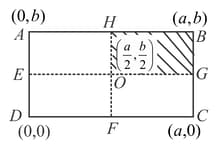
As shown in figure, when a spherical cavity (centred at ) of radius is cut out of a uniform sphere of radius (centred at ), the centre of mass of remaining (shaded part of sphere is at i.e., on the surface of the cavity. can be determined by the equation:
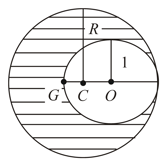
Three identical spheres, each of mass are placed at the corners of a right angle triangle with mutually perpendicular sides equal to (see figure). Taking the point of intersection of the two mutually perpendicular sides as the origin, find the position vector of centre of mass.
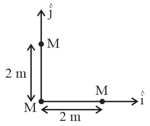
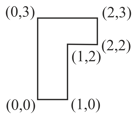
(i) Centre of mass of a body always coincides with the centre of gravity of the body.
(ii) Centre of mass of a body is the point at which the total gravitational torque on the body is zero
(iii) A couple on a body produce both translational and rotational motion in a body.
(iv) Mechanical advantage greater than one means that small effort can be used to lift a large load.
In the figure shown is a uniform wire. If the center of mass of the wire lies vertically below point , then is close to

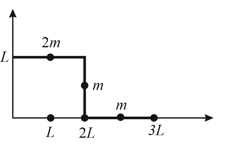
Three point particles of masses and are placed at three corners of a right angle triangle of sides and as shown in the figure. The centre of mass of the system is at a point:
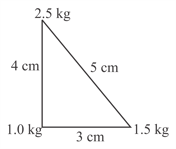
Figure shows a rectangular copper plate with its centre of mass at the origin and side If a quarter part of the plate (shown as shaded) is removed, the centre of mass of the remaining plate would lie at
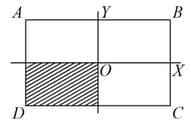
Three particles of masses , and are placed at the vertices of an equilateral triangle of side (as shown in the figure). The coordinates of the centre of mass will be:
